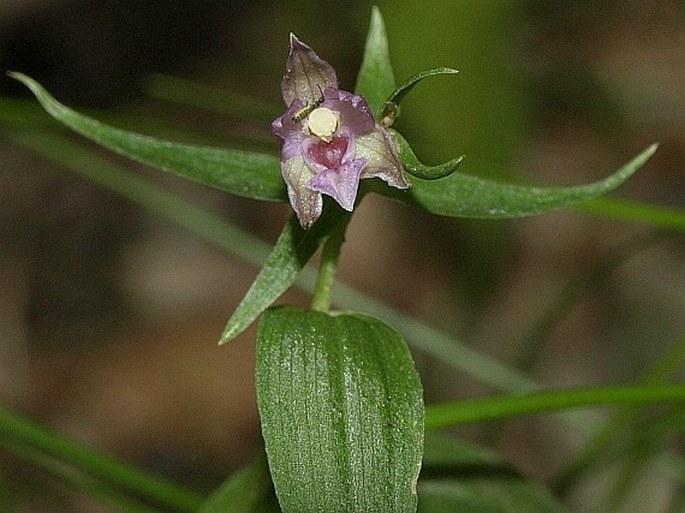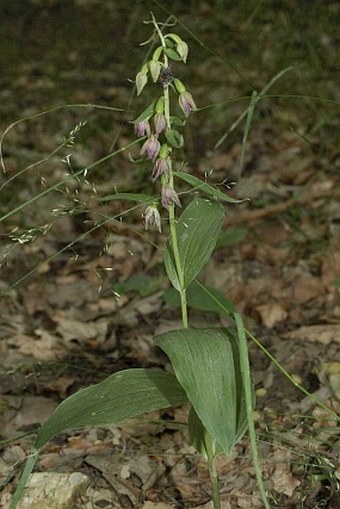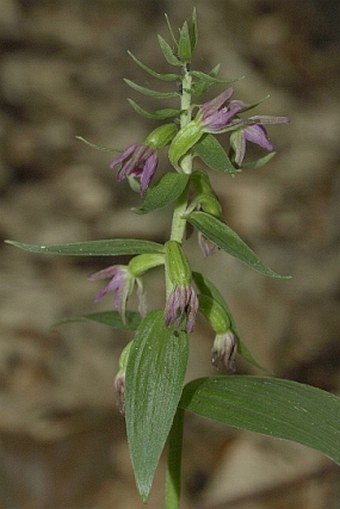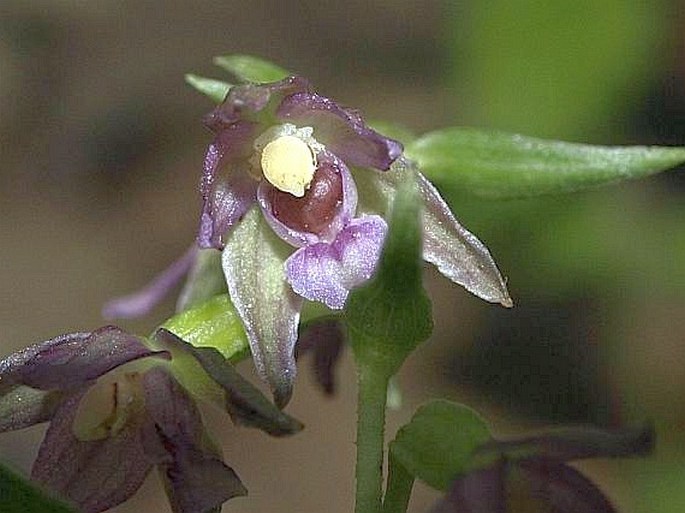Syn.: Epipactis muelleri subsp. cerritae Grasso
Family Orchidaceae Juss.

Distribution: An European species – northern Italy, France, Croatia, Hungary, Switzerland and Slovakia.
Ecology: It grows in the warmer broadleaved forests, from lowlands to submountain areas. This species grows in mid-shade to shade, slightly acidic to neutral deep substrates at altitudes between 100 and 1400 meters above sea level. Flowers from June to August.
Description: A perennial herb, 15–40 cm tall, stem is at the basal part tinged with violet, it usually has 3–6(–8) ovate-lanceolate leaves. An autogamic plant, the inflorescence has 8–30 flowers, which are green, violet or purple. The flowers are pendulous, 12–18 mm long, often only partially opened, hypochile is rose and inside is intensively red, epichile is almost triangular shaped, red or deep violet, as wide as long, on the top greenish, rostellum is not developed, and viscidium is not functional.
Endangering and Protection: According to the IUCN Red List is classified as endangered (EN), it’s also shown in the list of plants protected by the Convention on International Trade in Endangered Species (CITES). In Slovakia is classified as Critically Endangered (CR), and protected by law. On the Hungarian and Swiss Red List is listed as Critically Endangered and on the French Red List is listed as Nearly Threatened.
Note: Latin name (placentina) comes from the Italian name Piacenza, a town in the region of Lombardy in northern Italy, where this species was for the first time recorded.



These images were taken in Slovakia, the Little Carpathians (July 2009 and 2011).


